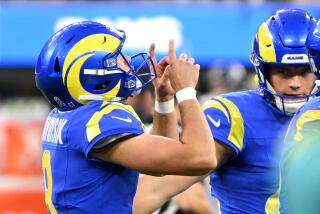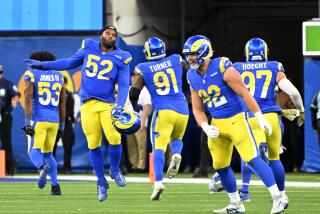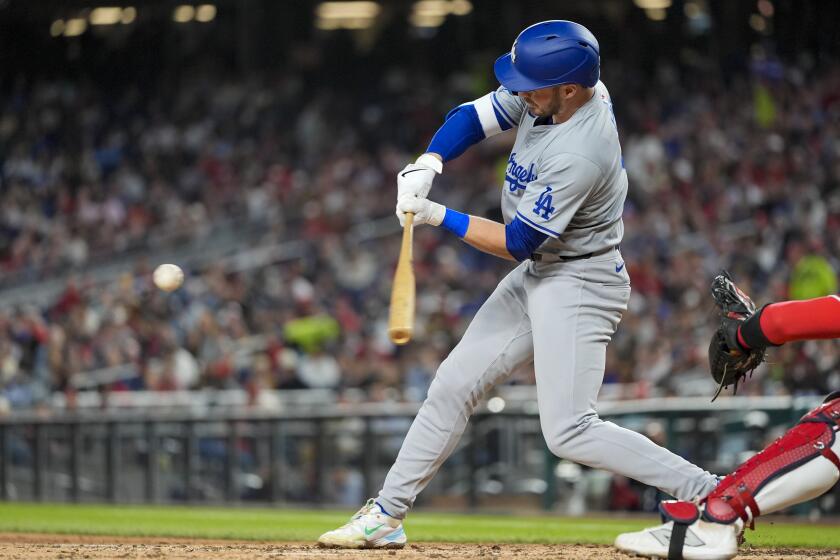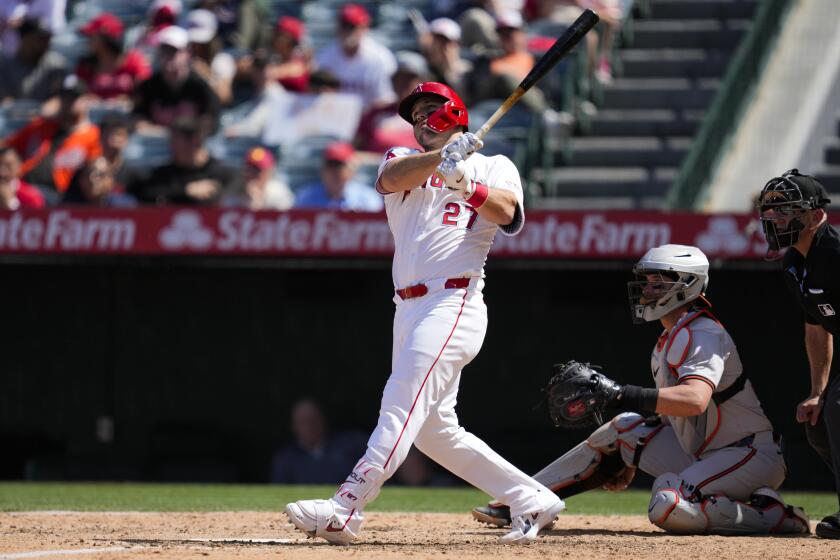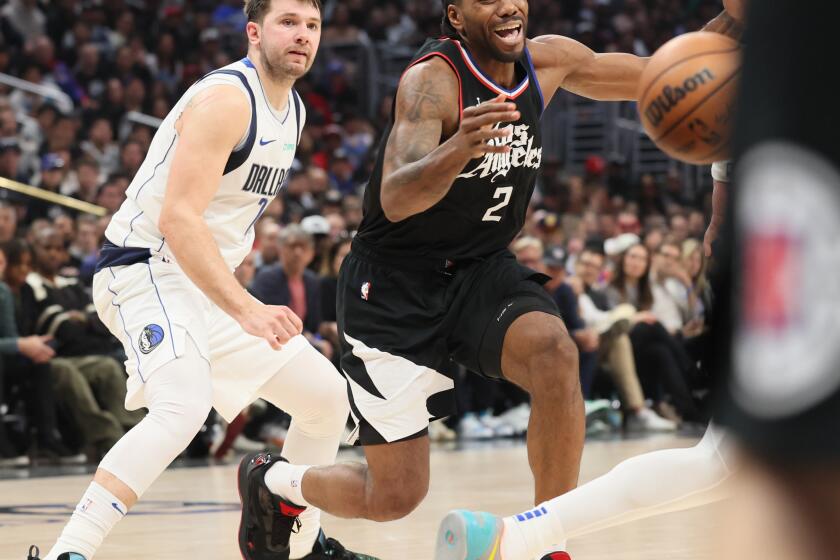Paul Allen had a big hand in saving Seahawks but is hands-off now
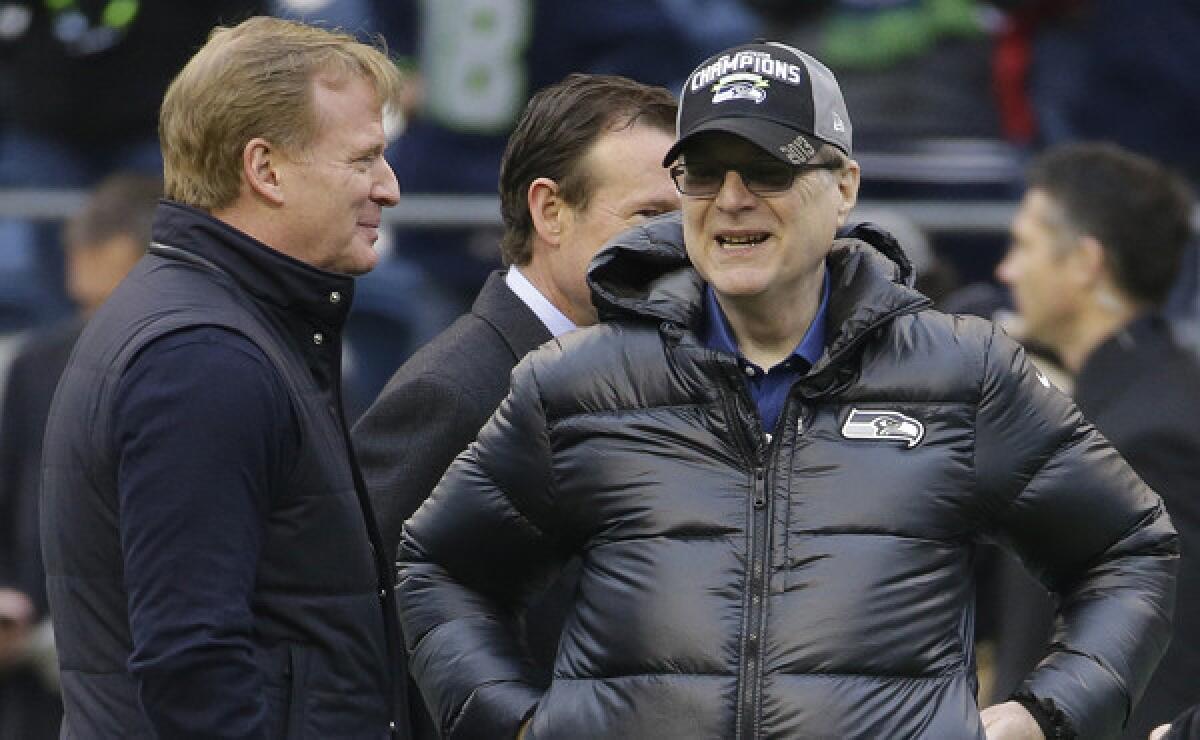
SEATTLE — The Seattle Seahawks are headed to the second Super Bowl in their history. They have an inexhaustibly dynamic coach in Pete Carroll, an instant-superstar quarterback in Russell Wilson, the NFL’s richest and most reclusive owner in Paul Allen, and a fan base so passionate that twice this season it set Guinness Book records for the loudest crowd at a sporting event.
A lot of people don’t remember the club’s darkest — and, as it happened, sunniest — days.
For one week 18 years ago, the Seahawks moved to Southern California.
They were never the Anaheim Seahawks, or the Los Angeles Seahawks, or even the L.A. Seahawks of Anaheim. But they spent the last week of March 1996 holding off-season workouts at Rams Park, an old elementary school in Anaheim that had been abandoned by the L.A. Rams when they left for St. Louis after the 1994 season.
“I was an L.A. kid, grew up in L.A. and appreciate L.A.,” said Gary Wright, a longtime Seahawks executive. “But to see those moving vans pull out of Seattle was probably the hardest thing, job-related, I’ve ever experienced. Just to see it happen, it was ripping your heart out.”
The move proved to be the first of many fake steps toward L.A. that NFL owners have used over the years to extract money from their home cities, and Ken Behring buckled when the league threatened to impose heavy fines if he didn’t return his team to Seattle. But to the players, and others, it felt very real.
Tight end Christian Fauria, who grew up in L.A. and was itching to return, even went house hunting in Newport Beach when he wasn’t working out with the team.
“It was awesome,” he recalled. “We were going to the beach. We’d go to work out, hang out at this little bar right on the boardwalk. It was like living the dream. It was too good to be true.”
And, just like that, it was over.
“When the league set down that ultimatum to Ken Behring — get your butt back to Seattle — the trucks must have been there the next day,” Fauria said. “Just as quickly as they packed everything up and got us down there, they packed them right back up and sent our butts back to Seattle. All our cars were on trucks heading back home.”
That brief and bizarre chapter in Seahawks history preceded the ownership era of Microsoft billionaire Allen, and eventually Super Bowl trips under coaches Mike Holmgren and now Carroll.
::
Convincing Allen to buy the Seahawks was no simple task.
He’s intensely private and, though he already owned the Portland Trail Blazers and loved basketball, he wasn’t especially passionate about football. Owning an NFL franchise would thrust him into the spotlight in a far more dramatic way than owning an out-of-town NBA team.
Still, Allen was basically the only hope for keeping the Seahawks in Seattle, and politician Pete von Reichbauer knew it. Von Reichbauer, a longtime member of the King County Council, had scoured the region for a potential buyer after learning privately in late 1995 that Behring was planning to sell the club. Behring, a developer from Northern California, was planning to break his lease at the Kingdome and move to L.A., which a year earlier had lost both the Rams and Raiders.
Meanwhile, the high-roller community in Seattle was weary from the messy, years-long fight to save the Mariners and secure them a new ballpark.
“Paul was the last man standing,” Von Reichbauer said. “There was a lot of searching up and down the coast, trying to find a Pacific Northwest person who could do it. I know one billionaire advised his [chief financial officer] that if he ever talked about buying an NFL team to shoot him in the right leg, and if he ever actually did it, to shoot him in the left leg.
“People who had the money didn’t want it. The downside was considerably greater than the upside.”
Behring, who bought the team from the Nordstrom family in 1988, quickly fell out of favor with the local community. He wound up owning the franchise for eight years.
“I’ve never seen somebody fritter away so many assets as quickly as [Behring] did,” Von Reichbauer said. “In the process, he got involved in some land deals on the Eastside [across Lake Washington from downtown Seattle], and tried to use the team as leverage.
“In the end, there was just a bad aura which turned into a bad feeling, and then it turned into resentment. It just went downhill.”
Allen, who at the time was third on the Forbes list of richest Americans with an estimated net worth of $7.5 billion, was wary of being used as a pawn by Behring to drive up the price. He didn’t negotiate directly with Behring, but instead had his people listen to the deal, with Von Reichbauer acting as a go-between.
“We’re really lucky, because Paul’s mom, Faye Allen, who has since passed away, liked sports immensely, as did Paul’s father, who took him to Washington games in cold, wet Husky Stadium,” Von Reichbauer said. “So the Allen family bought into this. It was not a financial decision. It was a fan decision.”
Eventually, Allen agreed to buy the team for slightly less than $200 million — about one-fifth of its current value — but the sale was made conditional on approval of a replacement stadium. The first plan was a renovation of Husky Stadium for dual use, where both the Seahawks and Huskies would play, but the neighbors squashed that.
That led to Allen’s funding an S.O.S. (Save Our Seahawks) campaign and statewide election in June 1997 to approve $300 million in public money for a new stadium and exhibition center. It passed with 51% of the vote.
Fast-forward nearly 17 years, and the Seahawks are a centerpiece of this community in a more significant way than they have ever been. They also have gone from NFL outpost to one of the league’s most successful and enviable franchises, particularly with their unshakeably devoted “12th Man” fan base.
“I’ve never seen a region so unified under the banner of the 12th man — blue collar, white collar or no collar, they’re all in,” Von Reichbauer said. “You can see a 20-year-old, broken-down Ford parked next to a brand-new BMW, and they both have a Seahawks sticker on them.
“Sports is a cultural unifier.”
::
Were he playing for the Dallas Cowboys, Washington Redskins, New England Patriots or any number of other NFL franchises, Cliff Avril likely would be on a first-name basis with the owner.
But as a starting defensive end for the Seahawks?
“I spoke to Paul Allen once,” Avril said. “When I say spoke to him, I mean I shook his hand and walked on. He has come to games. I’d probably seen him before but didn’t know who he was. But toward the end of the season it was, ‘Oh, that’s Paul Allen? OK, cool.’”
Allen’s current net worth is estimated at $15 billion (Forbes lists Miami’s Stephen Ross as the NFL’s second-richest owner at $4.4 billion), and he seldom attends owners meetings. He goes to Trail Blazers games, but is essentially hands-off when it comes to running his football team.
“He’s got a big life that he leads, and he’s doing a lot of stuff, so he checks in on us periodically and keeps track of stuff from afar,” Carroll said. “He’s not an on-site owner. . . . He cares a lot, but he doesn’t demonstrate his care by trying to run things.”
Allen has been known to check in via Skype with Carroll and General Manager John Schneider, often from remote and exotic locales.
“We’ll talk to him and he’s in the Galapagos Islands or something,” Carroll said. “Once, he was down in Antarctica and one of the two helicopters on his boat had crashed. He was, ‘I’m a little tied up right now.’”
Allen made a rare public appearance on stage last Sunday night, as the Seahawks were awarded the NFC championship trophy after beating San Francisco.
“This feels even sweeter, with the amazing support we have had from the 12th Man,” he said to the cheering crowd that stuck around at CenturyLink Field to watch the ceremony.
Three weeks earlier, when the Seahawks won their finale to clinch the top seed in the conference, Carroll handed a game ball to Allen and nudged him into making a speech to the team, which turned out to be a few words of congratulations.
“He doesn’t want to be in the front of it; that’s not his style,” Carroll said with a slight smile. “That’s why I gave him a game ball. He couldn’t avoid it. I had him.”
Allen has the Seahawks too. And that has made all the difference.
Twitter: @LATimesfarmer
More to Read
Get our high school sports newsletter
Prep Rally is devoted to the SoCal high school sports experience, bringing you scores, stories and a behind-the-scenes look at what makes prep sports so popular.
You may occasionally receive promotional content from the Los Angeles Times.
